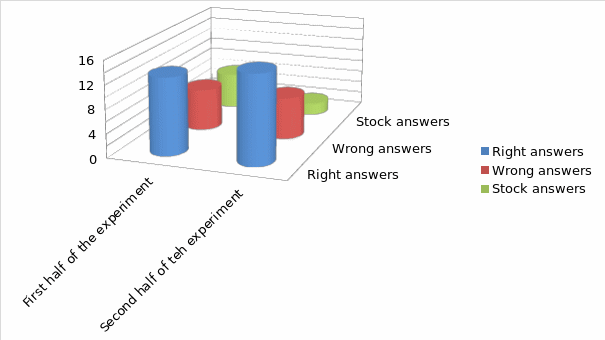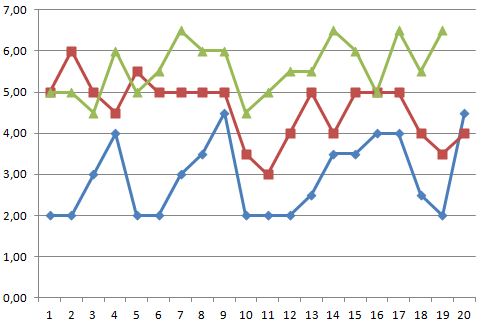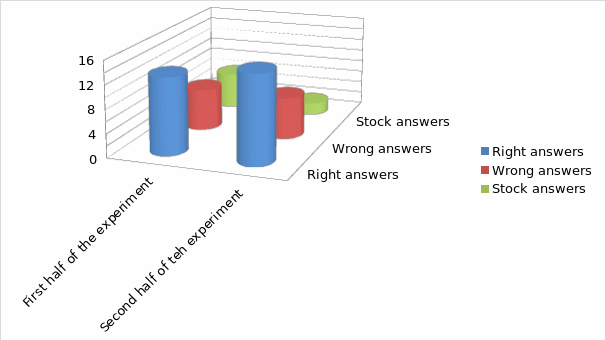Introduction
The framing effect is known as the source of bias and controversies occurring due to the misrepresentation of the information and the specifics of data perception that the human brain is characterized by. Traditionally, the framing effect is defined as the phenomenon that happens “whenever different descriptions of the same decision situation lead to different preferences, despite the fact that the ‘acts, outcomes, and contingencies’ associated with the decision remain invariant across the descriptions” (LeBoeuf & Shafir, 2003).
The framing effect, therefore, can be viewed as the factor having an adverse and quite direct effect on the decision-making process. The aforementioned phenomenon of framing can be considered a major impediment to the process of analogical transfer and, therefore, a severe threat to the process of decision making (Gilhooly, 1996).
In other words, the given research will aim at establishing a connection between the framing effect and the process of the analogical transfer. To be more specific, the hypothesis of the paper in question is that the framing effect reduces the number of alternatives for decision making to a very limited range of options, therefore, affecting people’s decisions to a considerable extent and contributing to retrieving rather than biased results.
The goal of the study is, therefore, to explore the links between the process of analogical transfer and the framing effect by analyzing the impacts that short-time visual experiences have on one’s decisions made on a conscious level in a similar setting and within a similar scenario.
The initial stage of the process can be identified as the process of setting the experiment and identifying the issues that may appear in the process by reviewing the existing literature on the topic. Specifically, a vast analysis of the key concepts (i.e., analogical transfer, framing, decision making, etc.) will be conducted so that the study could be carried out properly, and the research results could be viewed as interpretable.
The proposed study admittedly has a range of constraints, the one regarding the number of participants being the most obvious. It goes without saying that, in order to retrieve an objective outcome of the study, the incorporation of two or more research participants will be required; however, for the study in question to fit the established time frame, the need to resort to inviting only one research subject emerged. Speaking of which, the time constraint is another obvious obstacle on the way of retrieving unbiased outcomes.
It is desirable that the research should be carried out in several stages with major time lapses between each; however, due to the restricted amount of time given, the study received an air of urgency and thus provided the outcomes that are less credible than desired. It is suggested that a follow-up study will help address the specified dents in the overall argument of the current paper and continue the analysis of the relationship between the phenomenon of framing and the analogical transfer.
As far as the research operators are concerned, it will be reasonable to include the following ones into the range of keywords that the study may possibly have: analogical transfer, the framing effect, decision making. Though the operators identified above can be considered quite few, they still embrace the entire palette of ideas and concepts that the study revolves around, More importantly, the operators provided above hint at the research question, thus, allowing to understand what the study is going to concern and what kind of subject matter it is going to tackle.
Research Methods
As far as the research methods are concerned, the study in question can be identified as qualitative research, seeing that the key questions to be answered in the course of the research are related to establishing the relationships between the phenomena in question rather than quantifying them.
It should be noted that the idea of the research design adopted in the study was suggested by the article written by Kostic, Cleary, Severin, & Miller (2010); specifically, the concept of creating the environment that predisposes the manifestation of the phenomenon of the framing effect was inspired by Kostic’s experiment involving two sets of words provided to the participants subsequently.
It should be born in mind that the experiment will incorporate three key stages, i.e., the introduction of the students to a specific task with certain frames set, the reiteration of the assignment with frames shaped in a different manner, and the final stage involving the solution of a specific task without any frames included.
As a result, the need to introduce the third stage of the experiment, at which the explicit AT occurred, had to be incorporated into the design of the study as well. The specified alteration allowed for detailing the discrepancies between the AT and the phenomenon of the framing effect, thus, retrieving the results that would either confirm the relation between the two or subvert the expectations of the researcher, proving that the AT and the framing effect have nothing in common, to begin with.
Specifically, the research methods presupposed that the participant (S.) should be shown with a set of 20 image pairs that were linked logically together (e.g., the image of the sun and the one of the moon). After the presentation is over and the images disappear, the participant is provided with a set of 20 random images and is asked to link them together, as well as to provide their own understanding of these relationships (e.g., antonyms, synonyms, etc.).
Afterwards, the participant is supplied with another set of images linked to each other in accordance to a different principle (color coding, e.g., “red” = “bad,” “green” = “good,” etc.), allowed to keep it, study it and use it to their will, and suggested to carry out a similar exercise (i.e., link 20 random images to each other). The next stage will involve similar steps; a short presentation with various elements arranged in a specific order (i.e., a group of elements arranged in accordance with their size, from the smallest to the biggest ones) will be provided to the participants.
The next stage will involve arranging another 20 random elements according to a specific principle that the participant is to define on their own. As soon as the experiment is over, the links established by the participant between the objects from the second and the fourth exercises are analyzed carefully, coded accordingly (e.g., SYN (“synonyms”), ANT (“antonyms”), COL (“color similarity”), SIZ (“size”), etc.), calculated and compared correspondingly.
It is expected that the links between the objects that were suggested to the participant in both the first and the third parts of the experiment dictate the logic behind the links created by the participant in the intentionally random objects in the second and the fourth parts of the experiment.
The study in question allows for making two major claims, the first one concerning the very nature of the understudied phenomenon of the framing effect, and the second one related to the connection between the framing effect and analogical transfer. According to the results of the study, the framing effect affects the decisions made by the participants even after the factor is removed, and the people involved in the experiment are suggested to make their own connections between the objects that are listed for them.
One must admit that the method in question is far from impeccable in terms of the research outcomes and the further application of the study results for the needs of patients. The same can be said concerning the significance of the study outcomes as a basis for a follow-up paper; despite rather impressive and thought-provoking research results, the study in question cannot be considered valid enough seeing that it has a very limited amount of participants and, therefore, must be labeled as rather subjective.
Observation
As it has been stressed above, participant S. aged 18 agreed to participate in the study and undergo the procedure specified above. In the course of the research, the participant proved the initial suppositions concerning both the link between the phenomenon of the framing effect and the AT, as well as the fact that the framing effect does affect the further process of decision making even if the impressions of memories induced by previous experiences prove to be erroneous.
As the research results display, Participant S. did relate the irrelevant elements provided to them in the second stage of the experiment to the connection located by them in the first stage. It is quite peculiar that the fourth stage of decision making, which was supposedly affected greatly by the preceding process of pictures observation, delivered much more coherent results. Instead of making a big leap in their suppositions and linking obviously unrelated pictures to each other under the pretext of the supposed link of synonymy between them, Participant S. attempted at identifying a different connection between the objects.
Specifically, the participant realized that the fourth stage, which involved an analysis of the pictures such as the image of students learning and having a break, vegetables peeled and vegetables cooked, did not concern synonymy. More impressively, the participant understood that the pictures in question contained a time reference. The discovery in question took considerably less time than the one in the second stage of the experiment when Participant S. was trying to link pictures in accordance with the principle suggested by the presentation shown previously.
However, even though the participant clearly attempted to locate new principles of objects arranged in the third stage, the effects of the previous frames were evident. First and most obvious, it took the Participant S. more time to figure out how the objects in the pictures had to be arranged. Moreover, S. clearly tried following the examples suggested in the two previous parts of the experiment; it was only after they failed to locate the links that they started searching for a different solution.
The phenomenon observed and described above complies with the suppositions of the framing effect being an isolated case of analogical transfer.
To be more accurate, the research carried out proves that the phenomenon of the framing effect occurs at the subconscious level and, therefore, affects the decision making process at the same stage; thus, the framing effect phenomenon makes the process of decision making unnecessarily complicated, as a specific pattern of approaching a conflict is imprinted in a person’s mind.
Herein the erroneousness of the solutions designed under the impact of the framing effect lies; the specified phenomenon prevents the person in question act consciously and, thus, reasonably, forcing the person to make decisions based on false premises instead (Forbes, Mostek & Ferguson, 2002).
Indeed, as the chart below shows, the connections that the participant established between the objects shown in the second and the fourth stage of the experiment were very close to the frames that were set by the researcher in the first and the third stages. The specified phenomenon, which is also known as the framing effect, manifested itself in a very obvious manner, which led to the conclusion that the framing effect, which causes much controversy in the course of decision making, maybe disregarded successfully by the decision-makers.

According to the results of the experiment, the participant displayed a very graphic dependence on the frames that were set by the researcher. Despite the fact that the elements in the second set were mostly random, Participant S. followed the pattern that was set in the first and the third stages very closely, therefore, making the links based on antonyms (i.e., “sun” and “moon,” “happy” and “sad”, etc.) and the principle of color coding (i.e., the objects that were colored red contained negative connotations, whereas the ones that were painted green were traditionally regarded as positive phenomena and objects).
Participant S. handled this assignment making comparatively fewer mistakes. It should be noted, though, that it took S. more time to figure out the principle for arranging the objects.

Conclusion
The research results have shown in a very graphic manner that the phenomenon of the framing effect is closely related to the one of the analogical transfer, as both create premises for making conclusions necessary for the process of decision making. In addition, it has been discovered that, unlike the process of AT, which is entirely conscious in most cases, the framing effect occurs at the subconscious level of decision making and, therefore, often leads to making the wrong choice.
The specified feature of the framing effect and its influence on the decision-making process was inspected and basically proven to win the course of an experiment involving one participant and a set of visual aids. While the experiment in question may lack objectivity, it still proves the synapse stated in the hypothesis in a very graphic manner. The decision-making process is obviously influenced by the phenomenon of the framing effect, which, in its turn, gears the above-mentioned process towards a less conscious method of choosing between the existing alternatives.
As far as the solution for the problem in question is concerned, the effects that the framing effect has on the process of decision making can be reduced by exposing the person that is supposed to address the issue to the environment that enhances logical thinking and encourages a conscious process of analogical transfer. To be more specific, the stage of not only the problem analysis but also the factor analysis must be incorporated into the design of the decision-making approach adopted by the person or persons in question.
This begs the question of whether the.phenomenon of the framing effect can be dealt with. To be more specific, it is necessary to define whether there are means of altering the decision making processes so that the process of analogical transfer should not be restricted to a set of limited options suggested by the frames set in a specific situation.
The research results have shown in a very graphic manner that the framing effect, in fact, does have a major influence on the process of decision making as a catalyst for choosing among the existing variety of options. More importantly, the framing effect not only has an effect on the process of making a choice that is carried out with certain frames set. Once introduced to a certain principle of framing, the participants of the experiment continued using the same principle of selection, even in the situations that obviously demanded a different approach. This displays the dependence that people have on the frames that are set for a particular task; moreover, the research results point at the negative tendency to refuse from seeking other alternatives and complying with the pattern that has already been set.
The problem that the research results point at, therefore, transcends the field of the decision-making process and enters the realm of the psychology of judgment. As the results of the experiment have shown, the framing effect not only limits the decisions of a group of participants, leading to different outcomes in similar scenarios depending on the scope of framing. It also sets a specific pattern for the participants to comply with without actually analyzing the task and, therefore, making a misjudgment concerning the principles that the task is based on.
The outcomes of the experiment beg the question of whether the process of misjudgment can be addressed and prevented in some way. It can be assumed that the development of logical thinking and a critical application of analogical transfer in the course of decision making may help avoid making biased decisions based on framing. Therefore, it will be reasonable to suggest that the follow-up study should focus on the possibility of training the skills of key factors analysis. In addition, the analogical transfer principle should be incorporated into the decision making so that the existing options could be visible instantly.
Appendix
Appendix A

Appendix B

Reference List
Forbes, K. D., Mostek, T., & Ferguson, R. (2002). An analogy ontology for integrating analogical processing and first-principles reasoning. Proceedings of the Fourteenth innovative Applications of Artificial Intelligence (1–7). New York, NY: AAAI Press.
Gilhooly, K. J. (1996). Decision making. In K. J. Gilhooly, Thinking: Directed, undirected, and creative (174–193). Amsterdam, NL: Elsevier.
Kostic, B., Cleary, A. M., Severin, K., & Miller, S. W. (2010). Detecting analogical resemblance without retrieving the source analogy. Psychonomic Bulletin & Review, 17(3), 405–411. doi:10.3758/PBR.17.3.405
LeBoeuf, R. A. & Shafir, A. (2003). Deep thoughts and shallow frames: On the susceptibility to framing effects. Journal of Behavioral Decision Making, 16(2), 77–92. doi:10.1002/bdm.433